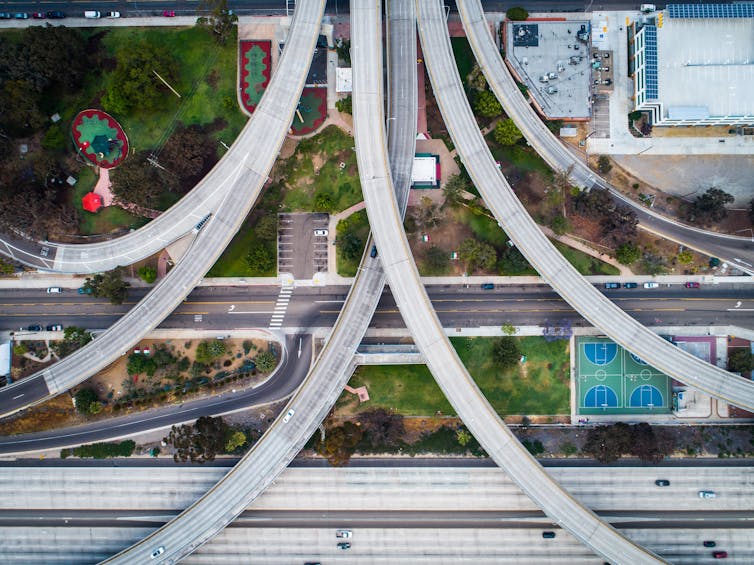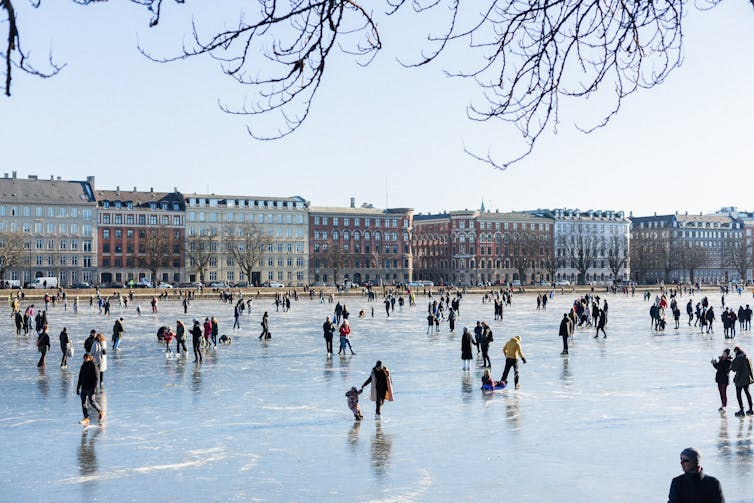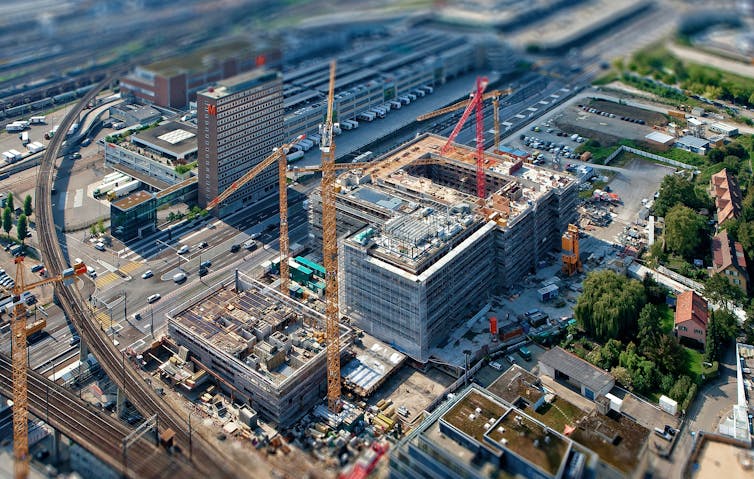Healthy cities aren’t a question of boring or exciting buildings but about creating better public space

Haim Yacobi, UCL
The US developers of a 300ft glowing orb, set to be built in the middle of Stratford, east London, and accommodate upwards of 21,500 concert goers, have withdrawn their planning application.
Las Vegas, in the US, already boasts one such venue, known as Sphere. Citing its “extreme” disappointment at London residents not similarly benefiting from what a spokesperson said was its “groundbreaking technology and the thousands of well-paying jobs it would have created”, Madison Square Garden Entertainment (MSG) has decided the British capital is not one of the forward-thinking cities it aims to work with.
Campaigners have responded with glee, not least because, in response to concerns over the proposed structure’s potential noise and light pollution, developers had initially suggested they invest in blackout curtains. “Residents would be served far better by building social housing on the site,” a representative for Stop MSG Sphere London reportedly said.
Quite how a city both caters to its residents’ needs and sustains its economy is an enduring debate. The tension is between innovation aimed at boosting investment (in this instance, in the entertainment industry) and what urban geographer Colin McFarlne terms the “right to citylife”.
Projects like the Sphere sit on one extreme end of what gets built in a city. The British designer Thomas Heatherwick recently highlighted what he sees as another extreme, though no less harmful: “boring buildings”.
In his new book, Humanise – a Maker’s Guide to Building Our world, Heatherwick says “bland architecture” causes stress, illness, loneliness, fear, division and conflict. Research shows, however, that more than individual buildings, how the city is planned as a whole variously harms or improves people’s lives.
The city as a complex system
The physical and social environment of any given city are just two contributing factors in the complex system that shapes residents’ wellbeing. Public health research has found a positive, non-linear relationship with a higher prevalence of mental health problems in more urbanised countries, particularly for anxiety disorders.

Mental health problems now account for over a third of the total burden of disease in adolescents in urban settings. Research shows that, for young people (a significant proportion of urban populations), health and wellbeing constitute major determinants in their future life prospects.
In Humanise, Heatherwick ignores this complexity. The book is a collection of thoughts, ideas, visuals and reflections on the role of contemporary architecture and architects. In it, the designer suggests that the world is facing a “global epidemic of inhuman buildings” and suggests a list of what to do and what not to do to achieve the reverse: “interesting buildings”.
Heatherwick sees cities as collections of buildings, of architectural objects. The problem here, of course, is that the various aesthetic merits of any given structure can be endlessly debated.
Some of Heatherwick’s arguments (“boring places contribute to division and war”; “boring buildings help to cause climate change”) are plainly simplistic. They also beg the question of who decides what is and what isn’t interesting.
As examples of interesting buildings that bolster people’s wellbeing, he cites, among others, the Parkroyal Collection hotel in Singapore and the Edgewood Mews housing project in Finchley, north London for their generosity.
The first, he says, is “enthusiastic to share its wonder with everyone” and the second offers “more than minimum to the world”.
To me, though, these are extravagant architectural statements of capitalist power (the Singaporean hotel) and an over-designed fortress building (London’s Edgewood housing project).

Recognising the importance of public space in cities
In the early 1900s, the German sociologist and philosopher, Georg Simmel, hailed the advent of a new urban condition. Compared to rural life, he said, the metropolis made people more individualistic, prioritised capitalist modes of production and intensified sensory exposure. As a result, he said: “Instead of reacting emotionally, the metropolitan type reacts primarily in a rational manner”. City dwellers were, Simmel said, less sensitive and further removed from “the depths of personality”.
Mid-20th century architects and planners further explored the socio-psychological damage wrought by urban expansion in the post-war era. In his 1971 book, Life Between Buildings, Danish architect and urban planner Jan Gehl underlined how, more than architecture, urban space itself had the potential to either harm or affirm social interactions.
The capitalist logic underpinning modernist urban planning was harming residents. More and more people were living in high-rise buildings. Open, green spaces were commodified. Private transport was prioritised. Gehl thought it was precisely in these daily situations, where people move between home and work and play, that cities should both “function and provide enjoyment”.
In over-emphasising the design of exciting buildings, Heatherwick overlooks this: that it is between and around buildings that you find the essence of urban life.

Research shows that urban policies have evolved since the 1970s, largely to try to shape cities for the better and to ensure better accessibility, better quality and diversity of housing, open spaces, more reliable infrastructure and more robust services.
After joining the World Health Organisation’s healthy cities initiative in 1987, Copenhagen developed a holistic urban policy. This included walkable streets, public transportation, diverse housing opportunities, more pointed social policies around ideas of community and using taxation to encourage smoking control. Nearly four decades on, the Danish capital continues to be upheld as one of the world’s healthiest cities.
However “good” or “interesting” architecture might be, it cannot tackle poverty, social exclusion and public health on its own. But even high-rise buildings can make a difference to people’s lives if they’re well designed and well regulated. How the built environment is shaped as a whole is crucial.
In denying MSG planning permission for a London Sphere, city authorities have prioritised residents’ concerns over private investment. Everyone benefits from public space and infrastructure being seen as public goods, not commodities.![]()
Haim Yacobi, Professor of Development Planning, UCL
This article is republished from The Conversation under a Creative Commons license. Read the original article.
Jobs Just For You, The Planning Professional
Our weekly or daily email bulletins are guaranteed to contain only fresh employment opportunities